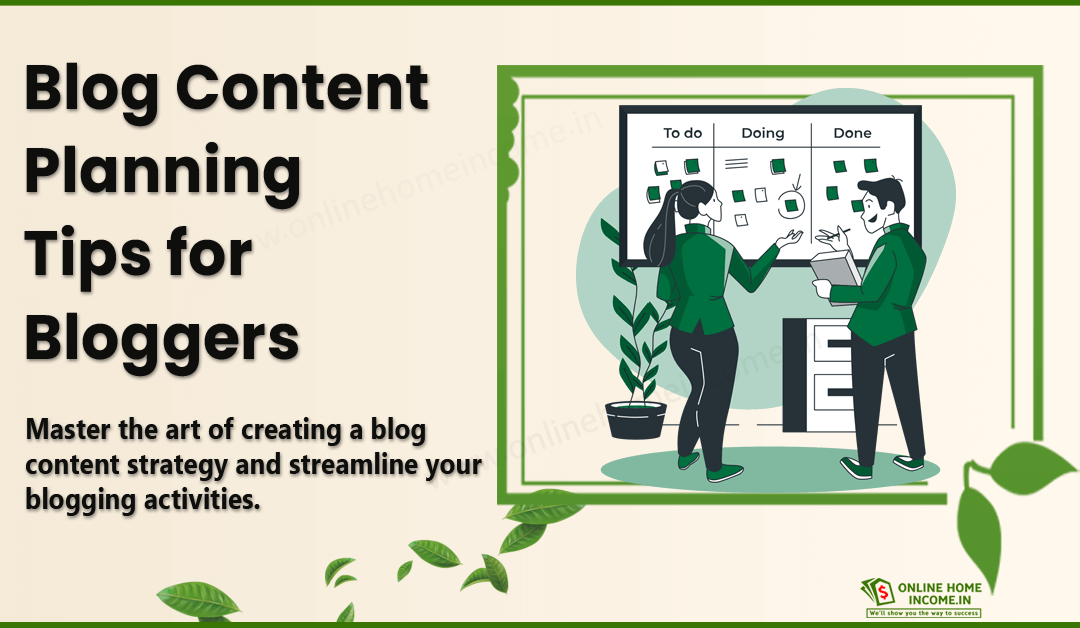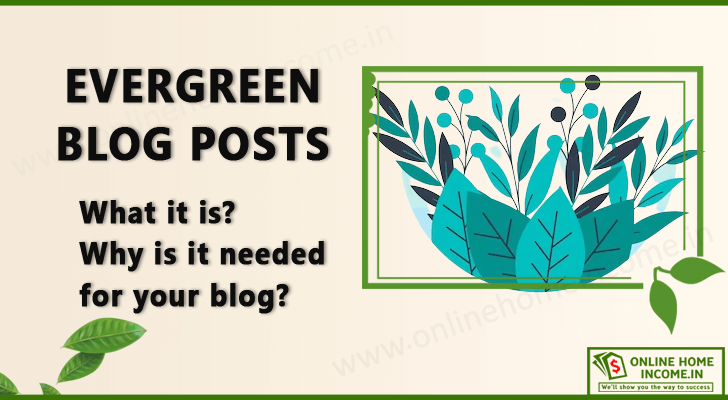In this article, we will discuss the importance of longer blogs. Also, learn 8 tips on how to write longer blog posts, so that, you can attract more visitors, improve your ranking, and boost your income. Never get stuck in writing articles for your blog.
The internet is a powerful tool for anyone who wants to spread a message, regardless of the topic. Blogging is an excellent platform for sharing ideas, engaging in conversations, and making connections.
But to make the most of it, you want to create longer blog posts that provide readers with valuable information and insights.
Longer blog posts will not only help you increase your reach, but also establish yourself as an authority in your field.
Blogging has become a way-to-go rewarding business for all people. As well as it has the potential to become a great source of passive income.
With the right approach, bloggers can build a successful business and generate a steady stream of income without putting in a lot of time or effort.

AD
⇒ Does $10 a day in your bank will make you happy? If so, here is an exciting opportunity for you to start free.
⇒ All you need is a Smartphone with an Internet connection. | Join today!
Benefits of Writing Longer Blog Posts in 2025
- Writing longer blog posts allows you to cover a wide range of topics. It can help you get more visibility in search engine rankings.
- Longer posts can help to keep readers interested and engaged by providing them with more detailed information and insights.
- It will create the opportunity to build trust with your readers and result in more loyal followers and potential readers.
- Longer posts will often be shared more on social media platforms because they provide more information and value.
Bloggers need to be consistent with their content, interact with their readers, and work to build their audience. With the right strategy, blogging can be a great way to make money and build a business.
How Long Should a Blog Post be a Successful Blogging?
This is a common debate among bloggers and writers across the world. Nowadays, the attention span of people is becoming shorter, and they want quick answers.
Quick doesn’t mean that your blog posts should be shorter. Many studies have proven that longer blog posts tend to perform better in search results.
— HubSpot study figured out the average content length is 2250 to 2500 words.
— Backlinko found that the average word count for blogs dominating the first page results was around 1,500 to 2,000 words.
— Another study on Medium concludes the ideal content length be around 1,300 to 1,800 words long.
For a more detailed case study, read this article discussing how long should a blog post be for a good SEO.
How long should a blog post be then?
- An ideal blog post length should be between 2,000 to 2,500 words long if you want to rank in search engines.
You should cover everything your readers want to learn on the topic. If you follow this principle, ultimately your blog post length will increase.
You must read the importance of Evergreen Blog Posts at this time. Because these kinds of content help you stay ahead of your competitors and drive organic traffic for a long time.
8 Practical Tips to Assist You to Write Longer Blog Posts
Writing longer blog posts can be challenging, especially when you feel like you have run out of ideas. As well as when you do not know where to go from there.
But do not worry, as with a few practical tips in this article, you will be able to create long-form blog content. Do not forget that longer blog posts that are engaging and informative gain an organic position.
You will learn about the importance of creating an outline, choosing the right topics, breaking up the content, and using visuals to your advantage.
With a little practice and the right tools, you can quickly learn on writing longer blogs this year.
1. Do Thorough Research and Collect Materials
Before researching for a blog post, spend some time brainstorming ideas and topics related to the blog post. You can use online tools or brainstorming techniques to generate ideas. Once you have some ideas, it’s time to start researching.
Use online sources such as Google Scholar, JSTOR, and Google Books. These sources help find articles, books, and other materials related to your topic.
Reach out to experts in the field, such as academics, professionals, or activists, to get more in-depth information on the topic.
After you have done your research, it’s time to start collecting materials. It includes data, statistics, quotes, images, and other evidence.
Make sure to properly cite the sources of your materials. Finally, organize the materials appropriately to ensure the blog post is clear and easy to read.
At the same time, you should check the facts and figures you have collected to ensure they are accurate. If possible, try to cite the sources of the information.
By following these steps, you can ensure that your blog post is well-researched and contains all the needed materials to make it comprehensive and interesting.
2. Create a Proper Plan and Article Outline
A proper plan and article outline for a blog is essential for ensuring the blog post is well-written, organized, and engaging. The plan should include a goal, target audience, topics to cover, and a timeline.
The article should include an introduction, main points, conclusion, and any additional information that needs to be included.
- Goal: The goal of the blog post should be clearly defined. It could be to inform, educate, or entertain the readers.
- Target audience: Identifying the target audience will help to determine what topics to cover, the tone of the post, and the language used.
- Topics: The topics should be relevant to the goal and target audience. It is also important to ensure that the topics are well-researched.
- Timeline: A timeline should be established for writing, revising, and publishing the blog post.
- Introduction: The introduction should provide an overview of the blog post and entice the reader to continue reading.
- Main Points: The main points should be the focus of the blog post and should be supported with evidence and examples.
- Conclusion: The conclusion should summarize the main points and provide a call to action or further reading.
- Additional Information: Any additional information or resources that need to be included should be added to the article outline. This includes FAQs, quotes, images, or links.
Creating a proper plan makes it easier for you to create long-form blog content.
3. Check Out Popular Content (Blogs & Websites)
Checking out popular content is a great way to push yourself to write longer blog posts. As well as you can get inspiration for future blog posts.
Popular content can be found by searching through popular websites and blogs. It includes those with high readership and engagement.
Sometimes, you can look through social media platforms for posts that have gotten a lot of attention.
Once you have found a few popular contents, start analyzing the post to know why it was successful. At the same time, you can use similar tactics to replicate that success.
This could include things such as the topics covered, the use of certain keywords, the type of language used, or the types of visuals used.
You can also look at the feedback and comments that the successful content received. It helps to get a better understanding of what resonates with readers.
These insights can be invaluable in helping you craft a long blog post that has the potential to become popular in its own right.

4. Include Stories and Examples (Add Data, Research Reports, and Studies)
Including stories and examples in your blog can be a great way to engage your readers and make your content more meaningful.
Stories and examples help to illustrate a point, provide evidence, or just add some extra interest to a post.
For example, if you are writing a blog post about the importance of nutrition, you could include a story about a friend or family who suffered from poor health due to not eating a balanced diet.
This could help to illustrate the importance of making healthy food choices. You could also include research reports and studies to back up claims.
For example, if you were writing about the benefits of exercise, you could reference a study that found that regular exercise can reduce the risk of cardiovascular disease.
By including this kind of data, you can make your content more convincing. Finally, stories and examples are helpful to make your blog posts more entertaining.
For example, if you are writing about budgeting, you could include a story about how you managed to save money by cutting back on unnecessary expenses.
By providing tangible examples and stories, readers will be able to relate to the content more easily and be more likely to take action.
5. Browse People Also Ask Widget in Google
The People Also Ask widget in Google is a new feature. It allows you to quickly and easily find more information on a topic.
This widget appears in the search results when someone searches for something related to their query. The feature is especially useful for those who are researching a topic and want to expand their knowledge.
It is a great way to keep up with the latest trends and developments in a particular area. It shows a list of related questions and topics that are related to the original query.
Users can click on any of the questions to expand the list and find more information on the topic.
It can help to give users an overview of the current state of the topic, such as what the experts are saying or what new research is being conducted.
It also helps to provide a better understanding of the topic by showing a range of related topics that can be explored.
This can be helpful for bloggers to come up with more content ideas to make their blog posts long and informative. You can cover more information deeply on the topic that resonates with your readers.
6. Create a List from the Visitor’s Perspective
Clear and Concise Content: Visitors need content that is easy to understand and free of jargon. Bloggers should write the content with the reader in mind, providing relevant and useful information.
Engaging Headlines: They need headlines that capture their attention and make them want to read more. Headlines should be creative and enticing while still accurately reflecting the post content.
Compelling Images: Eye-catching images attract more visitors. A single image can speak 1000 words. Images should be clear, high-resolution, and appealing to the reader.
Quality Writing: Visitors need content that is well-written and well-researched. Content should be free of errors and typos and should be easy to follow and understand.
Relevant Links: They need links to other relevant content, such as other posts in the series or external sources. Make sure you add links only if you feel it is relevant to the content.
Social Sharing Buttons: Visitors need the ability to quickly and easily share content on social media. It allows them to share the post with their friends and followers and increases the post’s reach.
The above list will make your blog post work like a charm. When the content talks to your readers, nothing can stop your blogging growth.
Putting yourself into the reader’s shoes is an art and a successful implementation will make you write longer blog posts.
7. Google Related Search is a Gold Mine
Google-related search is a feature of Google search that displays a list of related topics and searches at the bottom of the search results page.
This feature is available for any topic related to the one you have just searched for. Google-related searches can be a great source of inspiration for blog posts.
By using it, you can find related topics, ideas, and keywords that you may not have thought of when you began your search. You can use these related topics to create new blog posts or supplement existing posts.
For example, if you are searching for “home decorating tips”, Google will provide a list of related topics such as interior design, DIY projects, and furniture ideas.
These related topics can give you more ideas and content to write about, which can help you to create more engaging posts.
By using the related topics provided by Google search, you can find keywords that are related to the topic of your post.
It will help to ensure that your post is most likely to appear in the search engine results pages when people search for the topic. In addition, Google search can help you to find and link to related posts.
It will generate more traffic to your blog. Overall, Google-related search is a great source of inspiration for blog posts.
8. Edit Your Content Often (Break Paragraphs, Use Bullet Points, Add Photos)
Editing your content often is an important part of the blogging process. It helps ensure that your blog post is error-free, easy to read, and engaging.
Additionally, editing can help improve the flow of writing. It can help you to condense your post and make it more concise.
Editing and updating old content helps ensure that the content is up-to-date, relevant, and accurate.
You can add more personality to your writing, making it more engaging and enjoyable to read by editing after writing the first draft.
Some editing activities include breaking up into paragraphs, adding bullet points, and adding photos.
Breaking your content into paragraphs can help make your blog post more scannable and easier to read. It helps to make your post less intimidating and more accessible.
Adding bullet points is a great way to give readers an overview of the topics the bloggers discuss in the blog post. Bullet points can also help to highlight important messages or information that readers may want to pay attention to.
Photos are a great way to add visual interest to the blog post and draw more readers in.
Also, the photos are used to illustrate points or to provide a visual representation of the content that the bloggers discuss.
Conclusion
Blog posts in 2025 will continue to be a powerful tool for communication and marketing. A few people hesitate to blog because they are either stuck on new ideas or unable to find materials.
Bloggers should focus on quality content, use relevant keywords, and update the content regularly. Additionally, including visuals, stories, and other forms of multimedia increases reader engagement.
With the right tips and techniques, you can learn to write longer blogs that pack a punch!
At the same time, when it comes to the blogging business, quality should always come first. Even if a post is long, it should still be packed with valuable information and engaging to the readers.
It is necessary to provide readers with enough content to keep them interested and engaged, but not so much that it becomes overwhelming.
Finally, you all know lengthy blog posts tend to perform better in search results. And now you have learned how to write longer blog posts for your blog?
Just learning will not bring you success. Put your knowledge into practice and focus on consistent growth. Also, learn how to grow your blog traffic from zero. If you are stuck in getting blog traffic, find the reasons by reading this article.
FAQ on How to Write Longer Blog Posts
The first step in writing longer blog posts is to jump into deep research and collect the required materials. Check the “People ask to ask” and “Google-related searches” sections to get more content ideas. Apart from those, include your own stories, experiences, or case studies to add more value to the topic.
There is no one-size-fits-all solution to the above question. However, I can say from my experience that, aim to create one long blog post each month covering in-depth information on the topic. Lengthy posts build trust, increase authority and sometimes, rank higher on the search results. However, it totally depends on your blogging goal and audience needs.
Yes, longer blog posts rank better in the search engine result pages. Lengthy blog posts (2000 words or more) tend to rank more quickly than shorter posts. Long-form content generates more backlinks, and people are likely to share more.
Yes, longer blog posts are likely to cover more in-depth information on the topic, which is often seen as an authority signal by search engines. Writing long-form content tends to include more keywords and related terms, and therefore boost your blog ranking.






